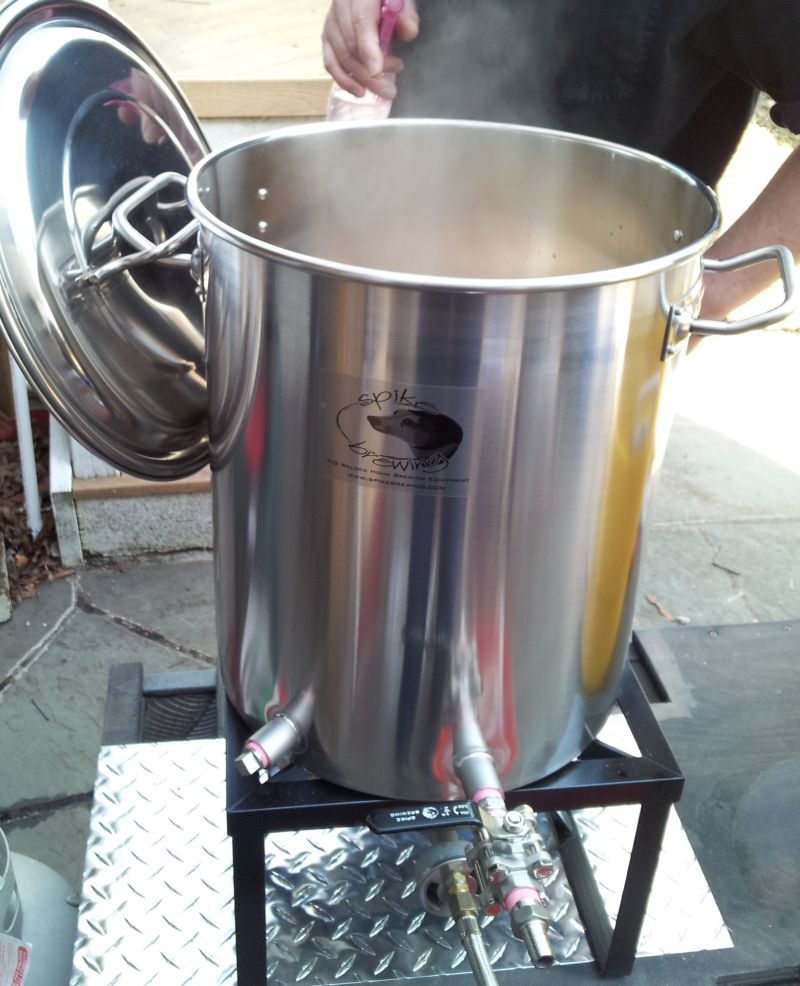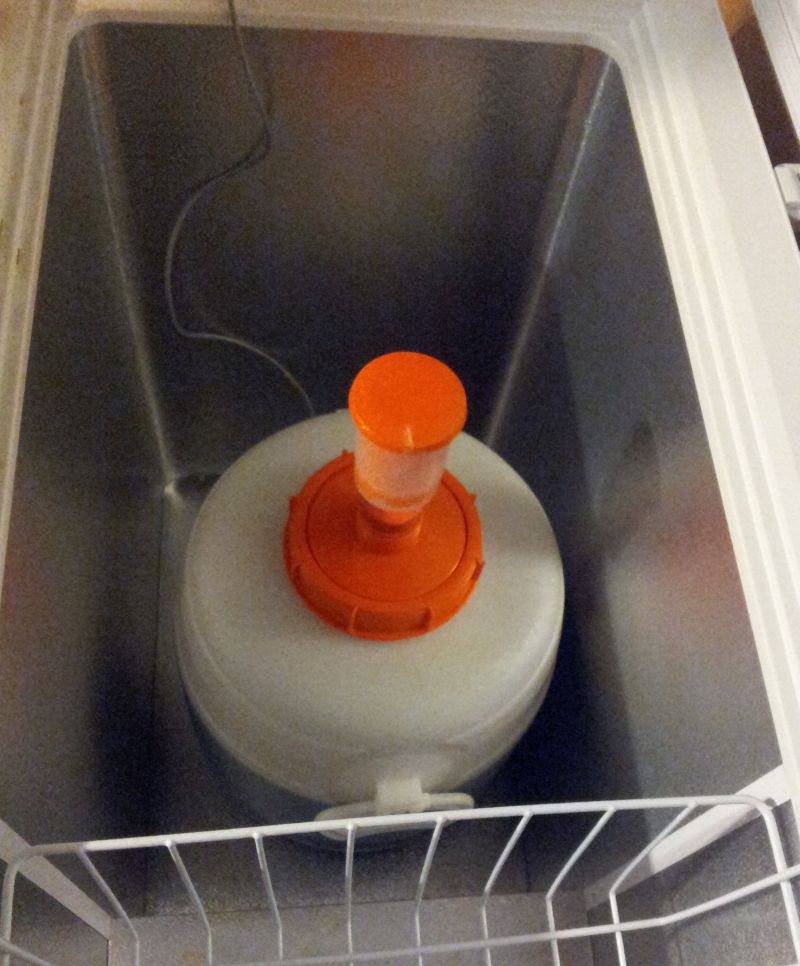Brew Day Lessons: High Altitude
 A couple of weeks ago, J and I attempted our first brew day since we moved to Colorado. I chose a saison, thinking it would be a fairly forgiving style. Not only were we using newish equipment in a new space, we’re also 6,700 feet above sea level, where water boils at 200 degrees Fahrenheit. To prepare for brewing in our new environment, we conducted a hot water test to walk through the process and we researched the affects of a low boiling temperature on the brewing chemistry. However, first-hand experience is always the best teacher.
A couple of weeks ago, J and I attempted our first brew day since we moved to Colorado. I chose a saison, thinking it would be a fairly forgiving style. Not only were we using newish equipment in a new space, we’re also 6,700 feet above sea level, where water boils at 200 degrees Fahrenheit. To prepare for brewing in our new environment, we conducted a hot water test to walk through the process and we researched the affects of a low boiling temperature on the brewing chemistry. However, first-hand experience is always the best teacher.
Water measurements
At a lower boiling temperature, we knew we’d need more water to hit our target temperature for mash out. For a 5-gallon batch, we set aside 10 gallons of water, but it took more than 3 gallons of water just to raise the 156-degree mash the necessary 12 degrees to stop the conversion process. As a result, we ran out of water before we could finish sparging the grains, and our system efficiency took a hit. Our saison became more of a table beer. Misjudging the water proved to be our biggest error. With a 15-gallon hot liquor tank, though, it will be easy enough to ensure an appropriate water supply in the future.
Equipment malfunctions
We encountered a few equipment hiccups, too. Just before we moved west, we rebuilt our system to better meet our brewing goals. We’re still refining the process and the setup.
- At first, we used a converted half-barrel keg as our hot liquor tank (HLT), but we switched to a 15-gallon stainless steel kettle for this batch. However, the brew stand was built for the height of the spout on the old HLT, which is much higher. We didn’t have enough height difference to allow water to flow from the HLT through the sparge arm during lautering. We quickly found a make-shift solution to increase the height difference, but we’ll build a booster platform for the HLT before our next brew day.
- During our first brew on the system this spring (an Irish stout), a bazooka screen in the kettle was sufficient to filter the hop particles. This time, though, hops filled the feed line, interfering with the pump and clogging the oxygen manifold and plate chiller. What a mess! We’re unsure why it was a problem. Perhaps it was something about the Hallertau pellets but, most likely, it was the result of running the pump longer in order to sanitize the chiller. To avoid this problem in the future, J built me a hop spider.
Temperature control
 Although we set the keezer to the target fermentation temperature of 68 degrees, we realized too late that the keezer doesn’t quite allow enough headroom for the large airlock on our Speidel fermenter, and we didn’t have an appropriately sized blow-off tube to replace it. We had no choice but to ferment at ambient temperature. Even in the cellar it was hotter than I would have liked for initial fermentation.
Although we set the keezer to the target fermentation temperature of 68 degrees, we realized too late that the keezer doesn’t quite allow enough headroom for the large airlock on our Speidel fermenter, and we didn’t have an appropriately sized blow-off tube to replace it. We had no choice but to ferment at ambient temperature. Even in the cellar it was hotter than I would have liked for initial fermentation.
Just before the move, J was designing and building a fermentation chamber. Since our brew day, he’s started working on it again. Once it’s constructed, we’ll dedicate the keezer to serving beer. In the meantime, I invested in a shorter drilled stopper, airlock and blow-off tube.
We’re planning to brew again soon (an altbier). I’ll report on the success of our improvements as well as on how our saison fared.